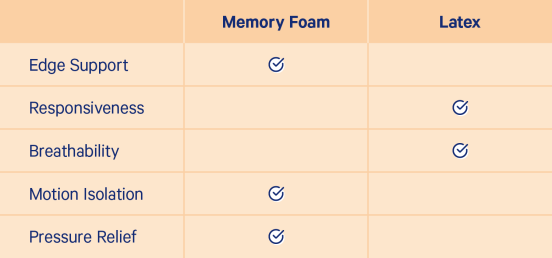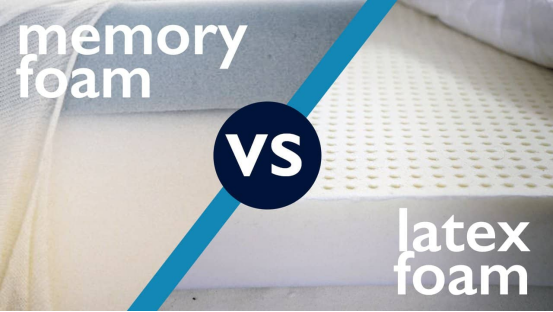
The Difference Between Memory Foam And Latex Foam Mattress
- By:Arrowsoft
- Date:2022/04/26
1.1 What Is Memory Foam ?
Memory foam is a type of polyurethane foam, which is a synthetic foam material. The technical term for it is "Viscoelastic Polyurethane Foam," although most manufacturers refer to it simply as "Memory Foam." Unlike regular foam, memory foam responds to body temperature and becomes softer and more snug. When you lie down on memory foam, the material responds to your body temperature and slowly adapts to your body shape. The result is a comfortable feel that modern memory foam has been dubbed "close to the body." When you get up, the foam cools and returns to its normal shape. Memory foam is prized for its comfortable fit. It's an affordable material, so you'll find it used in a variety of mattresses. The biggest downside to memory foam is that it tends to absorb body heat, so those who sleep very hot may want to think twice about using a memory foam mattress.
1.2 What Is Latex Material ?
Latex is a natural material extracted from the sap of the rubber tree. The sap is extracted and processed to form a dense foam. Finished latex foam has a similar consistency to synthetic materials like foam, but there are some key differences.
1.3 The Difference Between Two Foams
There are several distinct differences in performance between the two foams. While these are general trends in performance, not all latex or memory foam is created equal. The density of latex and memory foam, as well as the quality of the material, can affect the overall feel, firmness, support, and durability.

1.3.1 Feel
Memory foam has a deep, snug feel to the body. It slowly adapts to your body shape when you first lie down and slowly returns to its original shape as you move.
1.3.2 Support
Both mattress styles can be considered very supportive. Both materials support the body well, maintain spinal alignment, and improve sleeper comfort.
1.3.3 Pressure Relief
A mattress that provides good pressure relief will help relieve pain in certain problem areas, including the hips, neck, and shoulders.
1.3.4 Sleeper Body Type
The size and weight of each sleeper will also affect the performance of each mattress type.
1.3.5 Temperature Neutral
Memory foam tends to absorb and trap body heat, while latex does a better job of maintaining a neutral temperature. That being said, some wholesale mattress manufacturers add extra features or materials to their memory foam to help regulate temperature. Cooling gels, open-cell foam, and various other technologies have all been used to reduce memory foam's tendency to sleep hot.
1.3.6 Motion Isolation
Motion isolation is a measure of how well a mattress maintains motion on one side of the bed so as not to disturb sleepers on the other side. In this category, memory foam and latex earned similar ratings. Memory foam is slightly better at motion isolation due to its comfortable feel, but both materials do a great job of reducing motion transmission.
1.3.7 Price
Latex is much more expensive than memory foam. Regular latex mattresses cost about twice as much as regular memory foam mattresses. Having said that, latex is significantly more durable, so the long-term cost difference isn't that big.
1.3.8 Durability And Warranty
Latex is generally more durable than memory foam. On average, latex mattresses have an expected lifespan of about 7.5-8.5 years, while memory foam mattresses have an expected lifespan of 6-7 years. Also, latex mattresses usually have a longer warranty than memory foam.
CONTACT US NOW


CONTACT US


Foshan Arrow Furniture Co., Ltd.
We are always providing our customers with reliable products and considerate services.
If you would like to keep touch with us directly, please go to contact us





